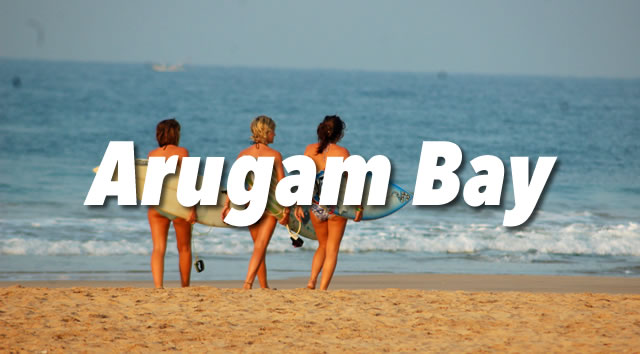
Arugam Bay Sri Lanka
Activities
Arugam Bay is mainly known for its outstanding surf conditions but the area also offers lagoons, archaeological sites and diverse wildlife. With freshwater, ocean, forest and culture so close to one another in this quiet and remote area, be prepared for relaxation, elephant and crocodile spotting, birds, monkeys and a chilled experience.
Arugam Bay Surfing
Arugam Bay is considered by many as one of the best surf-spots in the world. Surfing and swimming is possible almost all year round with the average height of waves being 1.5 - 2.5 meters.
Main surf spots are Potovil Point, Main Break, Crocodile Rock and Peanut Farm.
Micro tides seem to have little effect on any of the waves in the area. Regular surfers recommend Arugam Bay for easing into a new season; the breaks here come early and are a perfect warm-up for the more challenging rides to come later.
Arugam Bay Diving
There is some good snorkeling around Arugam Bay but the serious scuba diver should charter a boat and head for the Basses Reefs, the "must see" dive site in Sri Lanka. These two enormous, elongated reef complexes - the Great Basses and the Little Basses - running along the southeast coast of the island just off Yala National Park offer world-class conditions. Rugged sandstone formations and drop-offs, clear oceanic water and an abundance of big fish all combine to make any dive in these waters an adventure. Above the water, virtually the only indication these reefs exist are the two lighthouses that mark their locations. But underwater they're a fantastic wonderland of canyons, gullies, ridges and turrets, carved out of sandstone by prehistoric seismic action and the waves. Black coral bushes, fan corals, whip corals and all manner of sponges flourish on current-swept walls, while the proximity of deep water - Sri Lanka's shallow coastal shelf is especially narrow here - brings in big fish in huge numbers. Sharks, dogtooth tuna, barracuda, grouper, all species of trevally, rays, and schools of sweetlips and snapper are all commonly seen inshore on these reefs.

